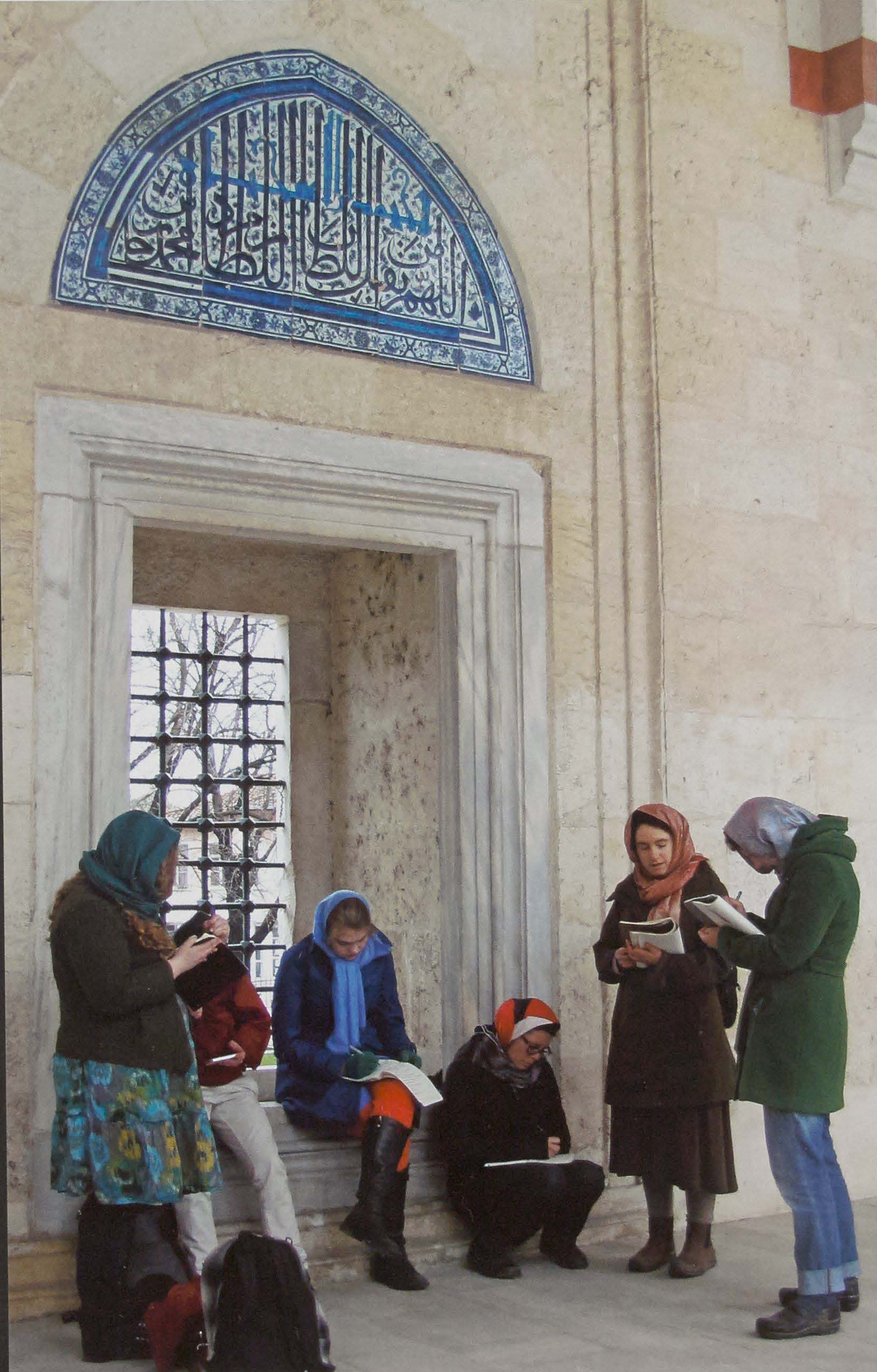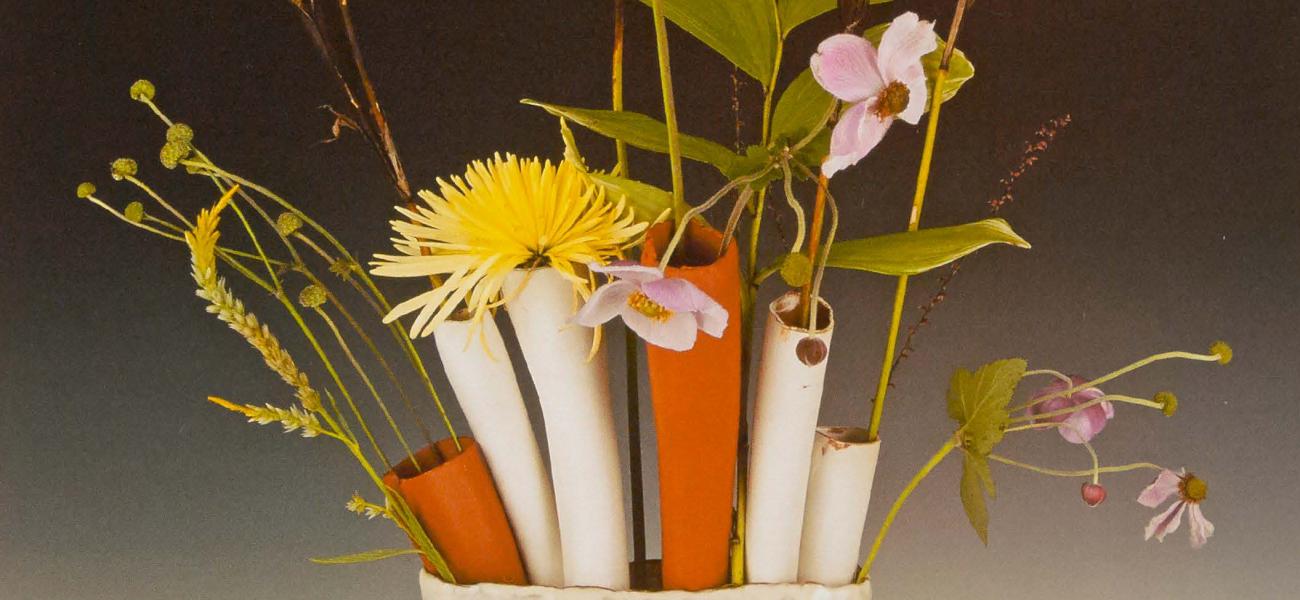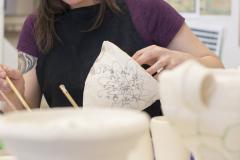Open Door Policy
The term "open-door policy," with its corporate connotations, may seem out of place in an academic context. In the ceramics studio at Earlham College in Richmond, Indiana, however, the open-door policy was for me its defining aspect. When I was a student there (1992 to 1996), the ceramics studio was an active space, and we worked under the mentorship of professor Michael Theideman.
As a double major in art (photography) and psychology, I was required to take a class in a three-dimensional medium. Over the course of a semester, , not only did I fall in love with the material, I also found myself part of a collective. While I cannot recall the phrasing of any specific assignment or quote the wisdom imparted through a particular critique, I can vividly recall the sense of being in that space. The studio was always busy but never hectic. Work among classmates was supportive and encouraging. Tools were shared, as were chores. And Mike's door was always open. It was through this door that he would stride with a smile.
Rather than work alongside us, Mike provided us unlimited space in which to create. By rarely showing us his work, he gave us considerable latitude to find our own answers. In Ceramics I, assignments focused on methods rather than outcomes, and it was the coil building that drew me in. A mid-semester assignment was to draw inspiration from the results of a previous assignment, reevaluate it, and resolve it anew. This idea of revision in art was new to me and resonated more as a process in the act of making than in the composition of written work. The studio was also unique in that students were bound by shared experience.
Unlike the atmosphere in the darkroom, libraries, or dorm rooms, our common interest in clay and the manifestation of objects we all witnessed being made fostered a strong sense of community. The open nature of Mike's teaching led us to be open with each other, supportive of endeavors, free with technological insights, and engaged with a world outside our individual needs.
It was a pedagogical perfect storm - the continuous presence of a professor who facilitated learning through challenges, encouragement, and care; a curriculum that allowed for self-determined exploration through open-ended assignments; and a peer group that created community in the classroom. Mike's tenure at Earlham was remarkable in that many of the students graduating from this small midwestern college continued to work in ceramics or other creative fields. From the classes on either side of my own, this includes nationally known studio potters, video artists, and professors. A show recently held in honor of Mike's retirement included work from twenty selected alumni spanning the three decades of his career.
The immediate impact of my college experience was a quest to develop more fully as a potter. In school we were raised in the shadow of the Leach family tree - the evolving line of masters and apprentices that had sprung from the workshop in St. Ives. Mike himself was a part of this lineage, having worked with Warren Mackenzie, and some classmates had gone on to work with established studio artists. Desiring to become a member of this clan, I headed to England to apprentice at Dartington Pottery in Devon. I worked there for a year and a half and subsequently as a production potter at potteries in two other countries. Throughout these studio experiences, the reciprocal act of teaching and learning from one another was as integral to communal studio life as the clay itself.
My decision to pursue a teaching career was fostered not only by my love of the material, but also by the energy that teaching generates. Within a college curriculum, broadening what students understand ceramics to be and what they believe themselves capable of can reverberate throughout their academic experience. For many of us, college facilitates the discovery of vocation, passion, and direction. This occurred for me in an unexpected place and under the auspices of a generous professor.
My friend and fellow Earlham alumna Cynthia Houghton speaks of valuing her time in the ceramics studio there because it differentiated itself from other classes through the experiential nature of the material and the learning process. There we were quickly introduced to the joys of mixing clay (usually with our feet), loading kilns, and mixing glazes. These forms of apprehending the material continue in my present classroom.
In reflecting on my current curriculum, it is hard to distinguish my own innovations from the inherent differences between higher education today and twenty years ago. I tend toward more directive assignments and a curriculum that, despite the college's limited resources, exposes students to as broad a spectrum of the field of contemporary ceramics as possible. Now as then, I value the diversity and intimacy of a liberal arts college, the variety of viewpoints and interests that can coalesce in a studio. I believe in small classes and self-directed learning.
This year's incoming freshman class was, on average, born after I took my first collegiate ceramics class. I believe this makes them the next generation, and I will do my best to stay true to the legacy of my mentors, while leaving the door open for the next revolution.
Editor's note: Cover Photo by Kathryn Gremley. Students photographed by Felicity Ratté.


